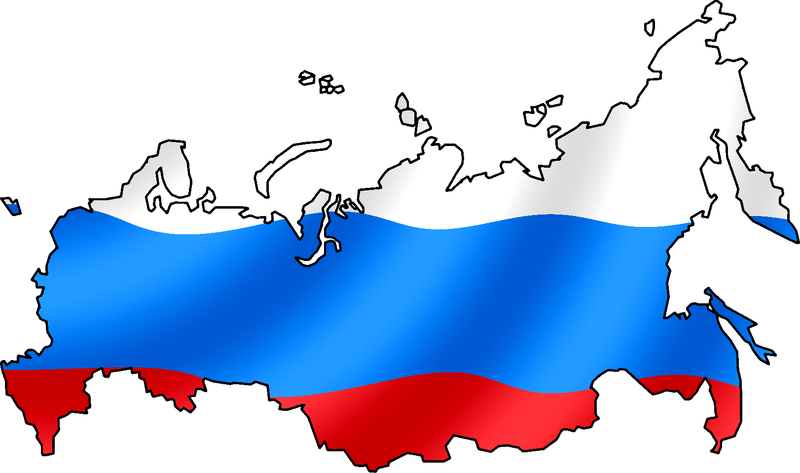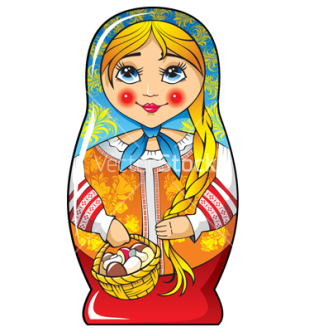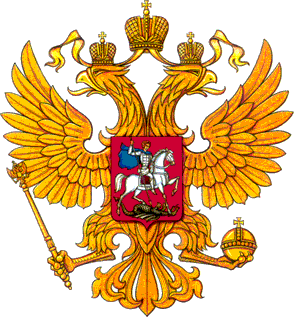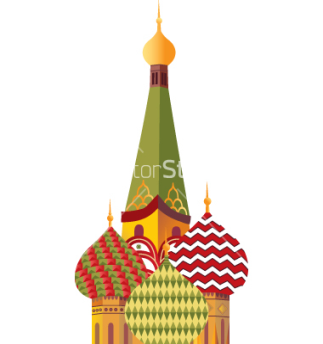учебник, английский. Министерство высшего образования и науки российской федерации
 Скачать 1.65 Mb. Скачать 1.65 Mb.
|
|
Dialogue 2 Read and dramatize the following dialogue about American students. Russian Professor Ivan Nesterov is visiting Michigan State University in the frames of his scientific exchange program. He is meeting his colleague Doctor George Shining to know more about the students in a US school. I. N.: Thank you once again for this meeting, Doctor Shining. I really appreciate it. G. S.: Oh, don’t mention, Professor Nesterov. It is my pleasure to help you. So please feel free asking me. I. N.: Well, I would like to know more about American students. This my first visit to your country, and I really feel nervous about that. Could you give any advice or recommendations? G. S.: If you ask me, I would concentrate on their competitiveness and their determination to work individually as well as in team. Americans are very competitive both in academics and in sport. So, be ready that you will be attacked with a number of questions, but this is only for the good! I. N.: I see. This is just a fantastic feature for a student. G. S.: Exactly! Your students will attend your classes, and some of them will meet you in your office during your office hours. Some of the students here seek tutors for extra help here, if they have troubles in this subject or if they really love it and want to enlarge the knowledge about the subject. I. N.: And who can be a tutor? G. S.: Usually tutors are advanced students, senior students, for example, they are not official workers of the university, they do this just for their additional income, and it’s not prohibited. I. N.: Yes, this is clear. I noticed that lots of students have a job already. G. S.: This is the demonstration of their other feature—American students are very independent. They want to live far away from their parents, they want to socialize in their own circles, and they want to earn their own money and to spend it how they want. I. N.: And they drive their own cars! G. S.: Yes, and besides cars, studies and work they have lots of other interests. It’s called extracurricular activities, look around, and you’ll see how many interest clubs we have here—sport clubs, music clubs, drama, literature, language and what not! I. N.: I’m impressed by a wide variety of student clubs and different organizations. I’m very glad that I have a chance to be a part of this world, Doctor Shining. G. S.: And we are so glad that we have you here, enjoy your stay, Professor Nesterov. And don’t be so nervous, I’m sure you will do well here. I. N.: Thank you, I hope so. TEXT 4 Different Types of Schools in the United States Read the text paying attention to the underlined words and say what types of schools we can find in the United States. What new vocabulary have you learnt from the text? Public vs. Private Primary and secondary education is free and available to everyone in the United States, although there is a great number of private and parochial schools in the country. There are also lots of families who, mostly for religious reasons, choose to educate their children at home; such practice is called ‘‘home schooling”. But the majority of American schoolchildren attend free schools. The individual states are responsible for education, not the federal government, that’s why there’s not a national curriculum that all schools must follow. The school is supervised by the local school district. School districts cover a geographical area within larger cities, or cover an entire small town or a community. Funding for schools comes from state and local governments and local taxes within each school district. This means that rich areas have well-funded schools and poor areas have schools with few resources. According to their funding, American schools are divided into: Public Schools—free schools funded by the government; Private Schools—paid schools; Preparatory Schools—a type of private school, typically a high school but sometimes including lower grades. These are also called “academies”, and are known for high standards of education. Elementary School Schooling starts officially at about age of five or six, with elementary or grade school. It consists of five or six years of basic education including reading, writing, arithmetic, social studies, science, physical education (also known as PE or gym class), music, and art. American schooling is divided into grades, starting with first grade and going up to twelfth grade, and students in each grade are called “graders”, for example, “first graders”, “fifth graders” and etc. Students of the elementary school usually stay in one main classroom, only going elsewhere for classes such as PE and art. Middle School / Junior High School When students finish the fifth or sixth grade, at the age of about eleven or twelve, they move on to either middle school or junior high school, depending on which system their school district uses. This part of education is a sort of stepping between elementary and high school and lasts for two or three years. A major difference between elementary and middle or junior high school is that students start to change classes, going to different classrooms with different teachers for each subject. High School The next step is high school, typically a four-year program that starts with ninth grade and ends with twelfth grade. Students start high school at about age of fourteen. In high school students have to complete a program of general education courses, but they will also be allowed to choose a series of electives, in more specialized subjects such as computer sciences, music, art, and foreign languages. Students in each year of high school are referred to by a special term for each grade. Ninth graders are freshmen, tenth graders are sophomores, eleventh graders are called juniors, and the students of the last year are called seniors. Higher School After getting a high school education practically anybody can go to a college or a university. This educational period is called higher school where students get their post-secondary education. There are over three thousands colleges and universities in the United States, all with different entrance requirements, tuition fees, and course specialties. They also come with different sizes, from the large state universities having ten thousands of students, to smaller private colleges with fewer than one thousand students. The American higher educational institutions may be supported by state funding, private organizations or religious denominations. Each institution is headed by a President or a Chancellor and is usually controlled by a governing board of trustees or regents. The first two years of a university or a college program are devoted to general subjects when students traditionally have many courses including introductory courses for more specialized disciplines. During the final two years students study specialized subject concentrating most of their courses in it. This field of concentration is called a major. Some students can study minor courses—second subjects which may be not related to their major. To earn a degree in a subject, a Bachelor degree or a Master degree, a student must complete a certain number of required and elective courses (major and minors), measured in credits, units or points. For example, the typical requirements for a master’s degree include 32 or 36 credits of graduate courses including a minimum of 20 credits in the major field of study, writing a thesis (dissertation work), and passing examinations in all required courses. Exercises. 1. True or False statements: 1) The majority of American schoolchildren attend private schools. 2) Home schooling has become popular in recent years. 3) The federal government is responsible for education in the US. 4) The US has a basic national curriculum for all its states. 5) The governmental and local funds for education are not equal, that’s why the rich regions have better schools in the US. 6) Middle school is a stepping between high school and higher school. 7) American colleges and universities have different entrance requirements, tuition fees, and course specialties. 2. Look through the following scheme. It illustrates the educational system of the USA. Describe the American system of education using this scheme. THE EDUCATIONAL SYSTEM OF THE UNITED STATES OF AMERICA Preschool / Nursery School and Kindergarten (at the age of 3‒5) Elementary School / Grade School (Primary Education) 1st Grade—5th Grade (at the age of 6‒11) 1st Grade—First grader (a student of the first year of education) 2nd Grade—Second grader 3rd Grade—Third grader… and etc. Middle School / Junior High School (Secondary Education) 6th — 8th Grades (11‒14) High School (Secondary Education) 9th — 12th Grades (14‒18): 9th Grade—Freshman (Frosh) 10th Grade—Sophomore 11th Grade—Junior 12th Grade—Senior Higher School (Post-secondary Education) Usually 4 years of education in university (college)/ (Undergraduates): 1) Freshman → 2) Sophomore → 3) Junior → 4) Senior → Bachelor Degree Graduate School (Post-secondary Graduate Education): 1 or 2 years of study → Master Degree (Graduate) Post-graduate Education / Adult Education: years of study → Doctor Degree Make up the scheme illustrating the Russian educational system and speak about the peculiarities of Russian Education. Listening Comprehension Task “The New Class” Listen and say why Susan likes her Spanish class. Listen again and put in the missing words: 1. Susan's teacher is a 35-year old from the city of  . .2. There are about  students in the class. students in the class.3. The lessons are in the local  . .4. The best student in the class is a  girl called Miko. girl called Miko.5. The student James wants to go to  next year. next year.6. Most of the students come from  . .7. One of Susan's classmates is a friend of  . .8. In today's lesson, they learned how to ask someone's name and some  . .Let’s talk about you Where do you study? When can school graduates enter your College / University? Do the applicants pass entrance examinations? When does the academic year at the College / the University start? At what department do you study? When do the students have session time? What kinds of lessons according to the time-table do you have? What is your favorite subject? Are you good at it? Do you know much about your future profession? Project work Choose one of the topics and get ready for the project work: Educational systems of Russia and English-speaking countries: comparison. My ideal educational system. Progressive Education in the world. MODULE 4 MY RUSSIA: THIS IS THE COUNTRY WHERE I LIVE     Warming up. Read and dramatize the following dialogues. Make up your own short situations based on the dialogues you have just read. Introducing Your Country Alexander: Hello, my name is Alexander. I am from Russia. Jessie: Nice to meet you, Alexander. I am Jessie, and I live in the United States. Tell me, please, what city you are from? Alexander: I am from Moscow. This is the capital of Russia as you might know. Jessie: Of course! I would love to visit this city. Alexander: It’s a very large mega polis. Jessie: Tell me more about your country. Alexander: Well, Russia is the largest state in the world. It consists of republics, oblasts (provinces), okrugs (districts) and krais (territories). All in all, it covers the eastern part of Europe and the northern part of Asia. Jessie: Yes, the size is enormous. Alexander: The total area of Russia is about 17 million square kilometers. Jessie: Where is your city located? Alexander: Moscow is located in western Russia, in the European part of the country. Jessie: Why is Moscow called “Moscow”? Does it mean anything? Alexander: Moscow is located on the Moscow River, for which the city was named. Jessie: I see. And what can you say about the temperature in your country? It is supposed to be very cold. Alexander: It is very cold in Siberia and in the northern part of Russia. As for Moscow, the climate is quite moderate and mild. Talking about the Peoples in Russia Roger: Hi, I am Roger. I live in Great Britain. And you? Sayana: How do you do, Roger! I am very pleased to meet you. I am Sayana. Roger: How do you do, Sayana! Where are you from? Sayana: I am from Russia. Roger: Really? But you look Asian. Sayana: I know. Russia has lots of nationalities and local ethnicities inside of the state. There are not only Russians like many foreigners see them on the pictures or in movies about Russia. The Russian population is very diverse. There are Tatars, Yakuts, Kalmyks, Bashkirs, Komi peoples and many others. And all they look different. I am a Buryat. We are native peoples of the republic of Buryatia in the Eastern Siberia. But we are all Russians because we live in the Russian Federation. Roger: This is so interesting. Now I know much more about the peoples of Russia. The Russian Federation Words and Phrases for the Topic: a state — государство; the head of the state — глава государства a federal parliamentary republic — федеративная парламентская республика; a federal subject — федеральный субъект the legislative power — законодательная власть a krai — край, a republic — республика; a district, an okrug — округ an autonomous okrug — автономный округ an oblast — область, a territory — территория to be formed — быть сформированным to be officially known — быть официально известным a permanent member — постоянный член a leading member — лидирующий член the G20 (the Group of Twenty Finance Ministers and Central Bank Governors) — международная Группа двадцати, «Большая двадцатка» the Council of Europe — совет Европы to share borders — делить границы to have maritime borders — иметь морские границы to extend — простираться, расширяться forest reserves — лесные ресурсы mineral resources — полезные ископаемые, недра to be rich in — быть богатым, иметь в наличии a variety of scenery and vegetation — разнообразие ландшафта и растительности; the vast territory — обширная территория plains — равнины mountain chains — горные цепи a temperate climate — умеренный климат TEXT 1 The Russian Federation—the Largest Country in the World Read the text paying attention to the new vocabulary and say what makes our country so unique. Russia officially known as both Russia and the Russian Federation is a state in northern Eurasia. It is a federal parliamentary republic, which consists of 85 federal subjects. The Russian Federation was formed in December 1991. From northwest to southeast, Russia shares borders on Norway, Finland, Estonia, Latvia, Lithuania and Poland (both via Kaliningrad Oblast), Belarus, Ukraine, Georgia, Azerbaijan, Kazakhstan, the People's Republic of China, Mongolia, and North Korea. It also has maritime borders with Japan by the Sea of Okhotsk, and the United States by the Bering Strait. At 17, 125, 200 square kilometers, Russia is the largest country in the world, covering more than one eighth of the Earth's inhabited land area. Russia is also the ninth most populous nation with 146 million people. It extends across the whole of northern Asia and 40% of Europe, having eleven time zones. Russia has the world's largest reserves of mineral and energy resources. It has the world's largest forest reserves and its lakes contain approximately one-quarter of the world's fresh water. |
